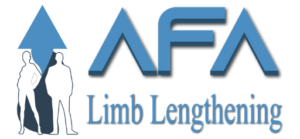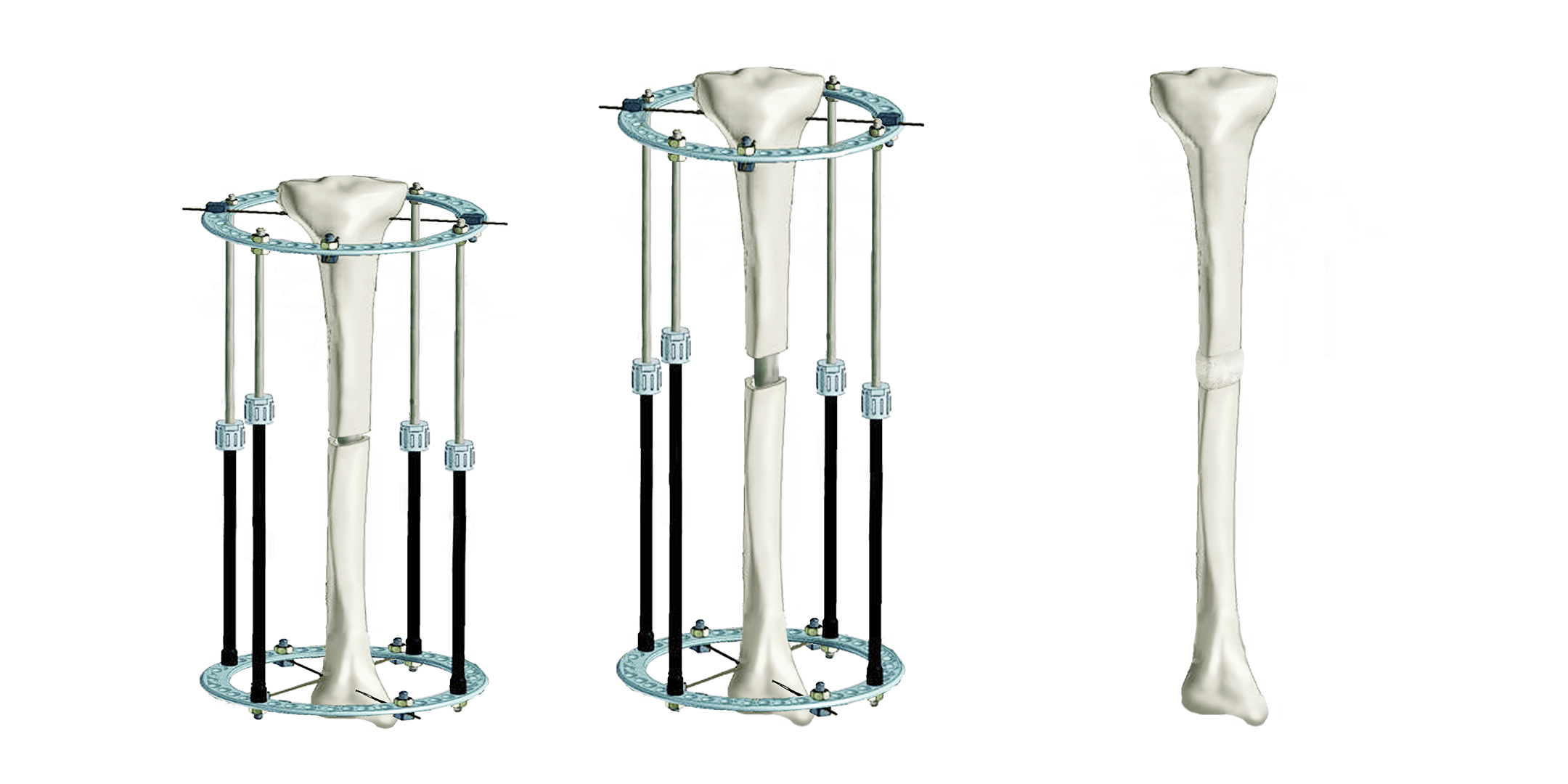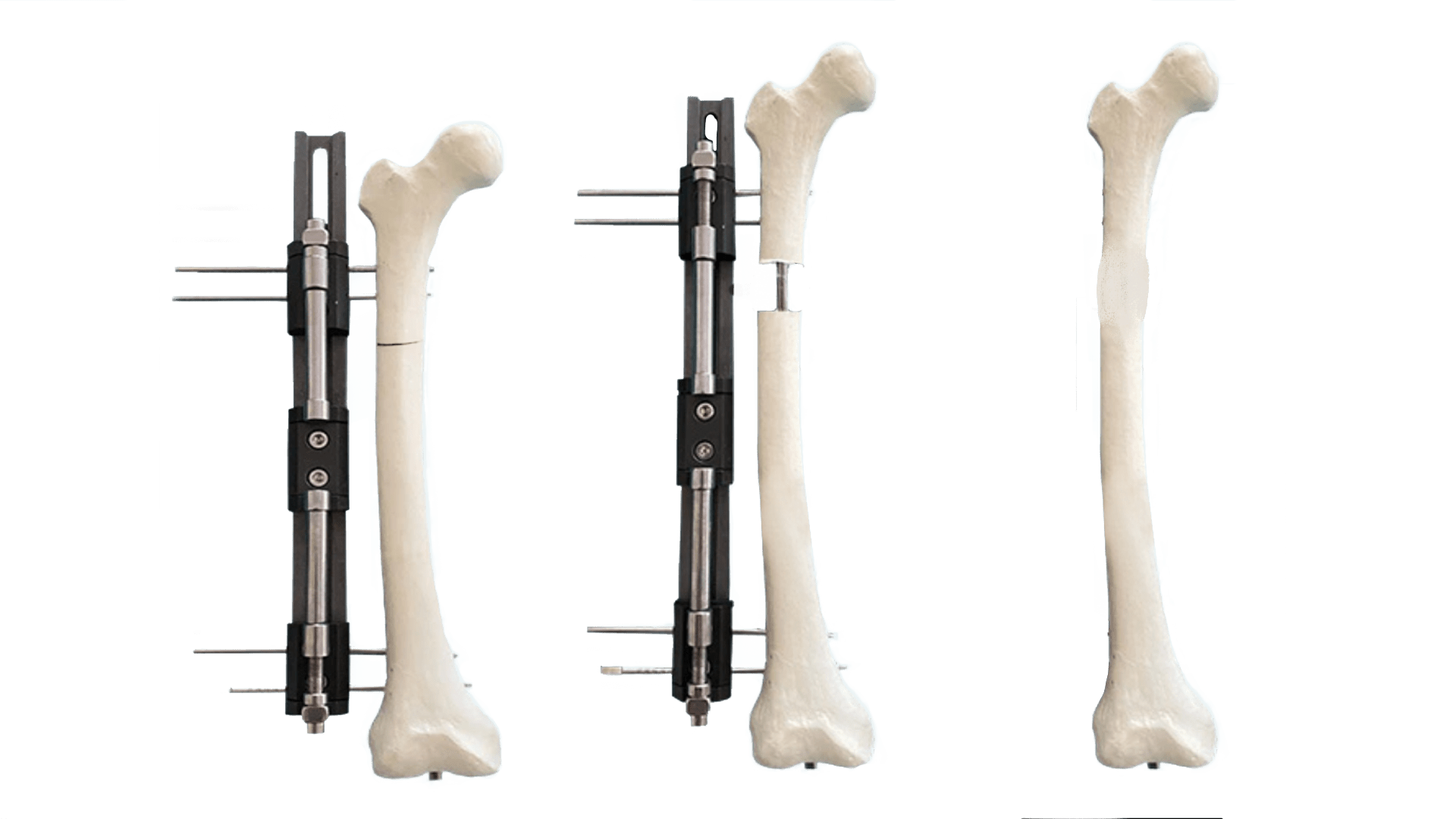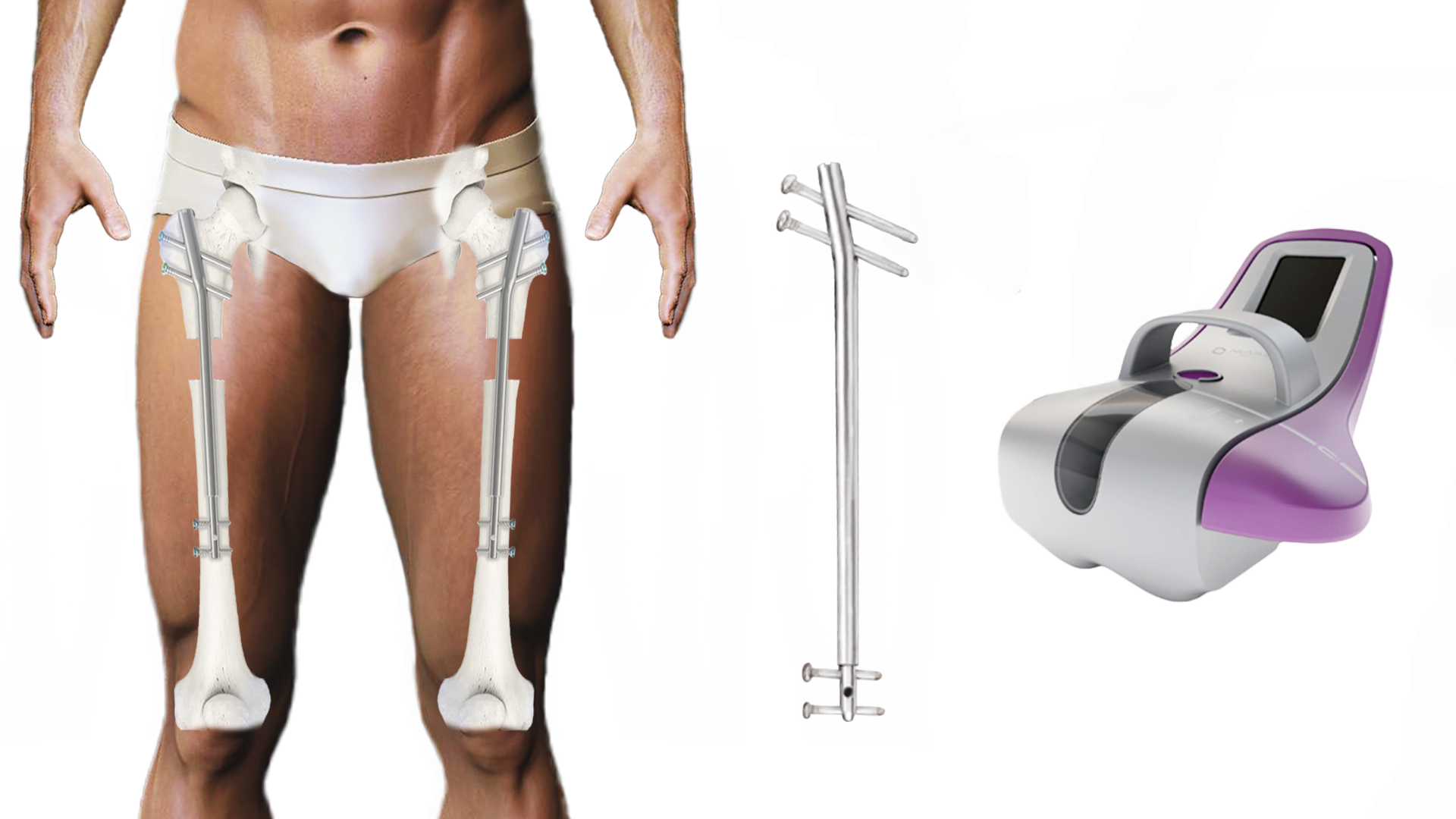Understanding Limb Lengthening Surgery: A Comprehensive Guide
Limb lengthening surgery, a revolutionary procedure offered in Turkey, is designed to increase the length of bones in the arms or legs. This intricate process, known as osteotomy, involves the careful separation of the bone and a gradual process known as distraction, where the bone segments are slowly pulled apart. This creates a space—the osteotomy gap—where new bone tissue begins to form. Over time, as the bone segments continue to separate at a controlled pace, new bone regenerates, culminating in an increase in bone length.
This remarkable procedure leverages the body’s innate ability to generate new bone, along with the regeneration of surrounding soft tissues, ligaments, fascia, blood vessels, and nerves, ensuring a comprehensive enhancement of the limb’s length and function. At the core of limb lengthening is the principle of distraction osteogenesis, a technique that has transformed the possibilities for individuals seeking femur lengthening, tibia lengthening surgery, or an overall height increase through surgery.
Whether you’re considering leg lengthening surgery for cosmetic reasons, such as height increase surgery, or to correct discrepancies in limb length, our facility in Turkey stands at the forefront of this advanced medical practice. Our experienced surgeons utilize state-of-the-art technology and techniques to ensure optimal results for each patient, making limb lengthening surgery in Turkey a sought-after solution for those looking to enhance their stature or improve their quality of life.
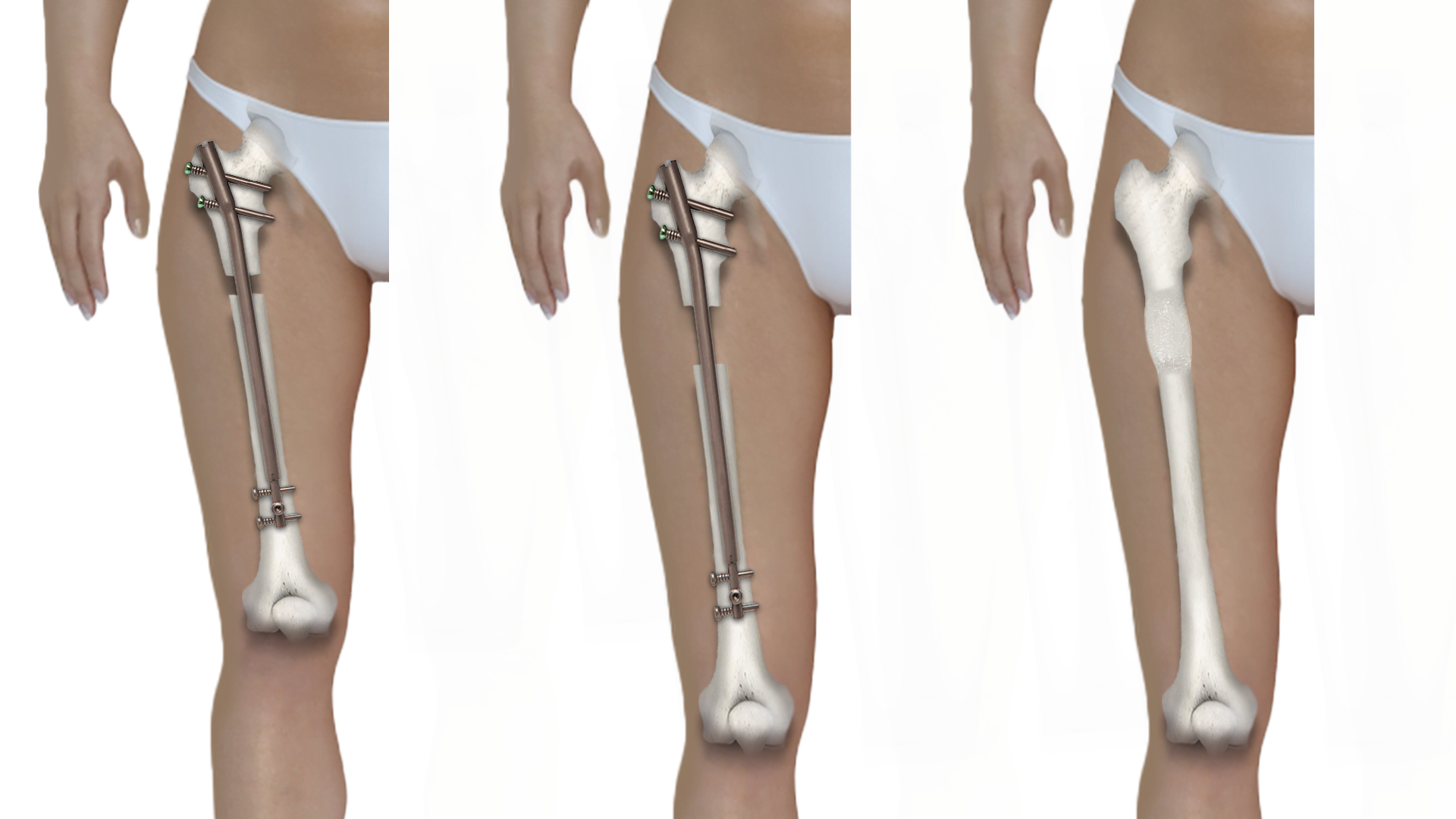
Curious about Limb Lengthening? Learn how this transformative procedure works:
Limb lengthening and deformity correction operate on the principle of distraction osteogenesis. When a bone fractures, the body naturally initiates the regeneration of new bone tissue to heal and restore integrity. In limb lengthening, a deliberate surgical osteotomy (bone cut) is performed, creating two segments that are slowly distracted using orthopedic devices.
The comprehensive process unfolds in three stages:
- Osteotomy: Surgically cutting the bone into two segments.
- Distraction: Controlled separation of bone segments using internal nails or external fixators.
- Consolidation: New bone tissue gradually fills the gap, leading to mineralization and hardening.
Bone segments can be lengthened approximately 10-15% of their original length, with an average rate of one millimeter per day. The lengthening phase is succeeded by consolidation, during which new bone solidifies. Throughout this process, soft tissues—including nerves, muscles, vessels, and skin—stretch and adapt to accommodate the limb lengthening, contributing to a comprehensive and successful outcome.
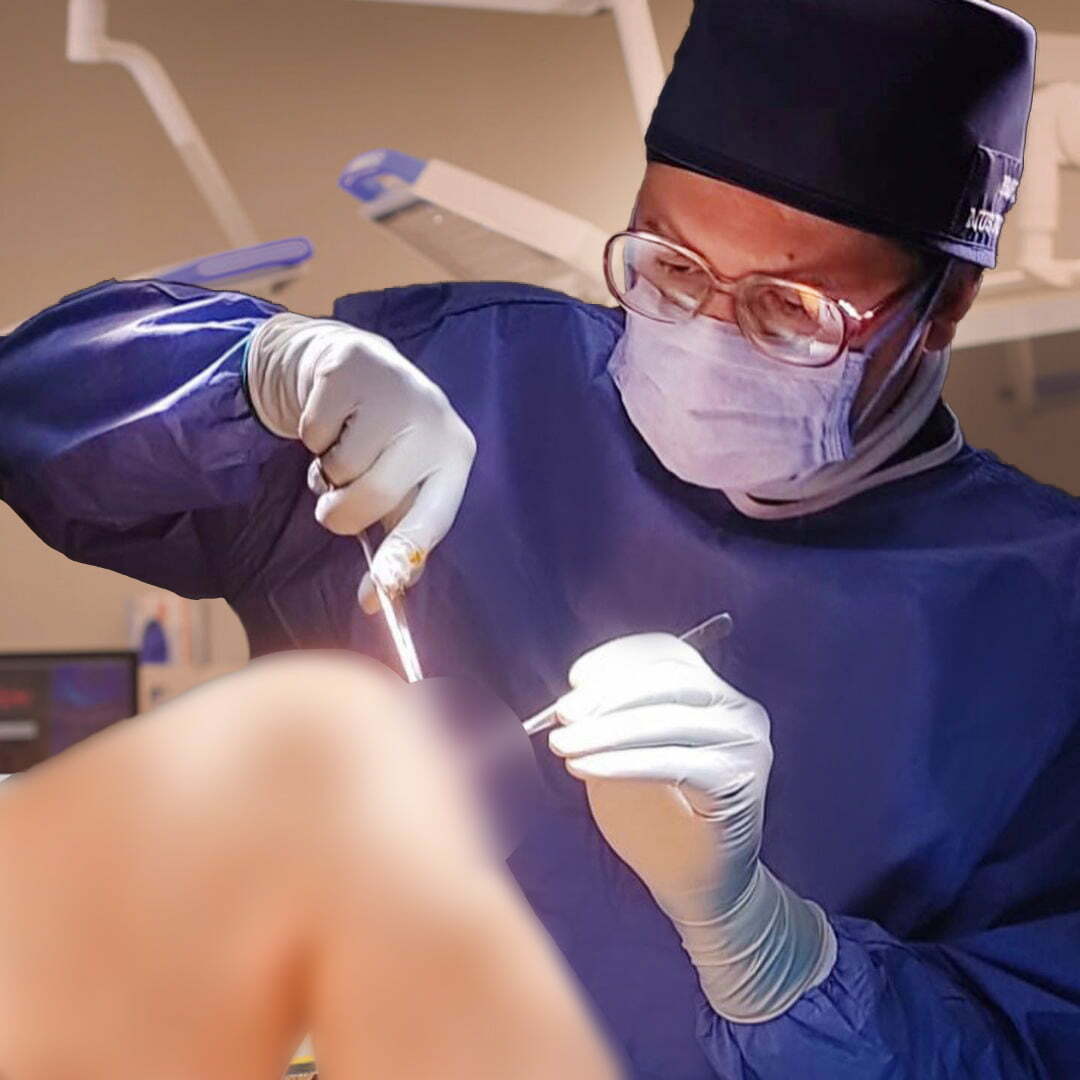
Limb Lengthening Surgery
During surgery, surgeon will cut the bone to create two separate bone segments. The surgical procedure to cut a bone is called an osteotomy. Surgeon will also apply an orthopedic lengthening device to the bone. Orthopedic lengthening devices that are inserted into the bone are called internal devices, such as the PRECICE nail. Orthopedic lengthening devices that remain outside of the body are called external fixators, such as the monorail fixator or the Circular (ilizarov) frame fixator. Internal method surgery includes insertion of the intramedullary nail, osteotomy and fixation of the nail. LON method surgery includes insertion of the intramedullary nail, osteotomy and attaching the external fixator. Surgeons make minimal incisions in both methods.
Limb Lengthening Surgery Methods
Cosmetic limb lengthening primarily employs two methods: internal (Precice 2) and combined (LON). In the internal method, specialized intramedullary nails, capable of extension, are discreetly placed inside the bone. This closed technique involves no external orthopedic device affixed to the bone from outside the body.
On the other hand, the combined method integrates an intramedullary nail within the bone, complemented by an external fixator—an orthopedic device attached externally for controlled lengthening. This dual approach combines the benefits of both internal and external methods, providing a comprehensive solution for cosmetic limb lengthening procedures.
Limb Lengthening Periods
Which bones I can lengthen to increase my height?
Safe Limits In Limb Lengthening
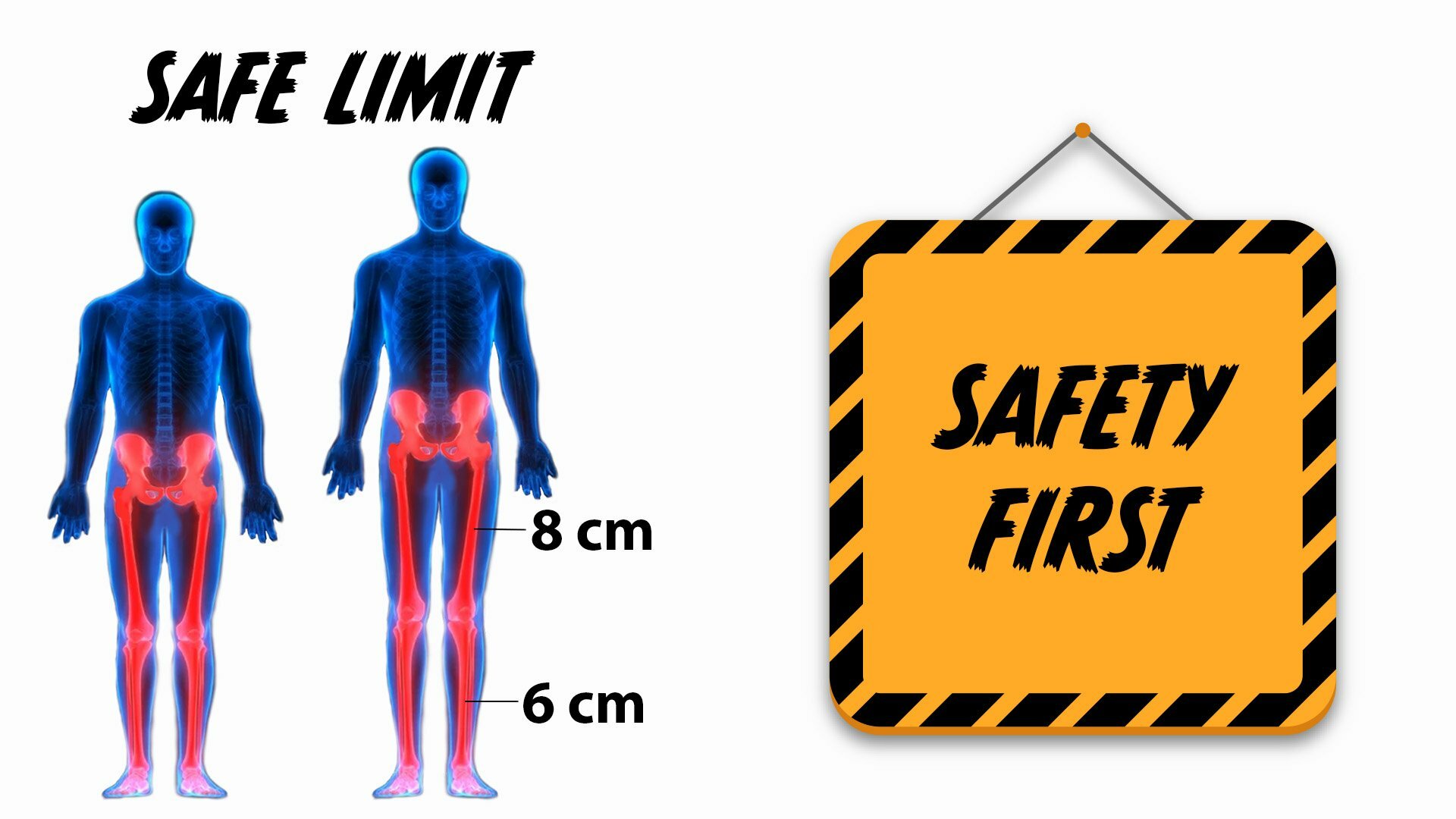
How much taller can I get ?
After limb lengthening surgery, the body undergoes a gradual process, lengthening bones at an average rate of 1 millimeter per day. It’s vital to recognize that, while bones have remarkable healing capacity, the surrounding soft tissues—muscles, nerves, tendons, and fascia—need to adapt at the same rate. The body’s ability to form new bone tissue is high, but there are limits to how much soft tissues can safely stretch without damage.
Extensive studies over many years have established safe limits for limb lengthening, averaging 8 cm for the femur (thigh) and 6 cm for the tibia (shin). However, it’s crucial to understand that these are general guidelines, with individual variations. The key lies in ongoing clinical evaluations during the lengthening process.
Exceeding these safe limits poses risks and can lead to permanent physical damage. At our center, we prioritize patient safety, committing to health over mere centimeters. With a steadfast commitment to ‘Safety First,’ we ensure a responsible and secure approach to every limb lengthening procedure.
Lengthening Process in Limb Lengthening
LON Method
In the LON method, daily lengthening is done with an external fixator. The lengthening rate is usually 1 millimeter per day. Total lengthening of 1 millimeter is usually divided into four and applied every 6 hours. When the lengthening time comes, the patient completes the lengthening by turning the apparatus of the fixator 90 degrees. The lengthening rotation is quite and simple and patients can easily do it themselves. Lengthening is stopped when the target length is reached.
Internal Method
In the Precice system, the lengthening is performed with the external remote control (ERC) system. ERC device is placed in a certain marked area of the patients leg and lengthening is done with a single button, and it is very easy and comfortable for the patient. The PRECICE has excellent rate control and patients report minimal pain associated with lengthening. Generally, lengthening is done 3 times or 4 times a day, and generally 1 mm lengthening is achieved per day.
Limb Lengthening Physical Therapy
Physical therapy is one of the most important components of limb lengthening. Limb lengthening is a difficult and long process. It includes many complications. Physical therapy ensures that these complications are minimized. The aim of treatment is to maintain and increase range of motion, strengthen muscles, prevent contractures, and increase functionality.
After the lengthening process begins, the soft tissues around the bone, which grows 1mm per day, should grow at the same rate. However, these tissues cannot stretch at this rate. This situation causes the most important complications of lengthening surgery. Stretching occurs in these tissues, especially in the muscle and nerve tissue. Tension increasing in the nerve tissue can cause pain, loss of sensation and loss of movement. The tension in the muscle tissue causes restriction of joint movement and loss of muscle strength. The physical therapy process is very important to avoid such complications.
As AFA, we offer the world’s most intensive and effective limb lengthening physiotherapy to our patients. Each of our physiotherapists specializes in limb lengthening. Our patients complete the extension process without any problem by taking intensive physical therapy 5 days a week without leaving their comfort zone.
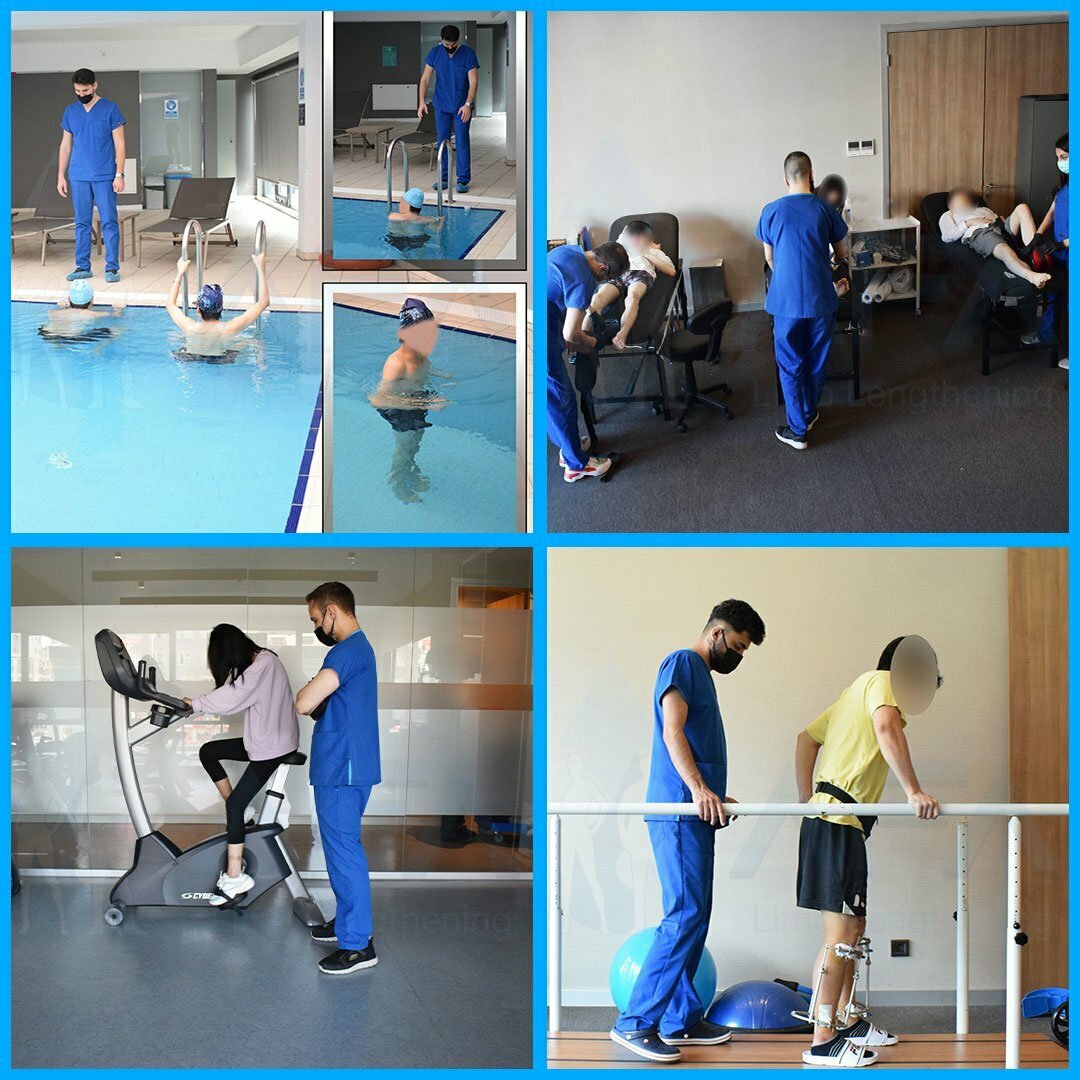
Walking in the Limb Lengthening
LON Method
Weight Bearing Protocol
Distraction Period: External fixators carry the entire body weight during the lengthening period. The load carrying capacity of external fixators is very high. LON method patients can walk with a full weight bearing, but walking with a walker is recommended during this period due to loss of balance. Consolidation Period: Since the IM nail has a high load-bearing capacity, the patient can walk with a full weight bearing, but it is recommended to use a walker or crutch until the callus tissue reaches sufficient hardness (1-2 months).
Internal Method
Weight Bearing Protocol
Distraction Period: Precice 2 method patients can walk with partial weight bearing with an assistive device, while Stryde method patients can walk full weight bearing. However, it is recommended that every patient use a walker or crutches during the lengthening period due to loss of balance.
Consolidation Period: In the consolidation phase, patients with the Precice 2 method should walk with partial weight bearing for a while and use a walker. Stryde method patients can continue walking with full weight bearing.
Frequently Asked Questions about Limb Lengthening Surgery
- Is limb lengthening surgery safe?
- Experienced surgeons and a skilled medical team ensure the safety of limb lengthening surgery. High success rates result from thorough patient monitoring, especially during the lengthening period. Effective management of complications leads to a full recovery.
- Is limb lengthening a painful process?
- Medical professionals control pain with painkillers during hospitalization. Soft tissues may experience mild discomfort as they adjust during the extension phase. Pain levels vary, but correct application of the technique typically requires mild to moderate painkillers.
- Can anyone get limb lengthening surgery?
- Eligible individuals include those with leg length discrepancies, with or without deformities. Generally, recommend cosmetic procedures for those aged 20-50, who are non-smokers, in good health, and without chronic diseases. Smokers must cease smoking as a mandatory requirement.
- How is the limb lengthening surgery performed?
- Surgeons perform an osteotomy (bone cut), then use orthopedic devices like internal nails or external fixators for distraction. The bone heals as it reaches the desired length.
- What are the limb lengthening surgery techniques?
- Techniques include external, combined (LON), and internal methods. Internal methods, like the Precice nail, offer a more comfortable and advanced approach.
- What is the combined (LON) method?
- The LON method combines internal and external fixation by utilizing an external fixator over an intramedullary nail. After lengthening, surgeons remove the external fixator, and the internal nail bears the body weight.
- What is the motorized nail (Internal) method?
- Motorized nails, the most advanced technology, involve implanting an intramedullary nail inside the bone. With an external remote control, patients can comfortably perform lengthening.
- What are the safe limits for cosmetic limb lengthening?
- The soft tissue’s adaptation capacity determines safe limits, with average limits being 8 cm for femurs and 6 cm for tibias to avoid complications.
- How long is the hospital stay in Limb Lengthening surgery?
- Patients typically stay 5 to 10 days post-surgery, receiving medical and physical therapy.
- What is the optimal daily lengthening rate?
- The optimum rate is around 1 mm per day, ensuring soft tissue adaptation.
- How much time do I need for limb lengthening process?
- Lengthening takes approximately 10 days per centimeter, with a full recovery period of around 6 months.
- When can I walk after limb lengthening surgery?
- Patients can stand and walk with support on the first day, following a designated walking protocol.
- What are the most important steps in limb lengthening surgery?
- Planning, surgery, and follow-up are crucial steps for a successful limb lengthening process.
- Is there an age limit for limb lengthening surgery?
- People typically recommend cosmetic surgeries for individuals aged 20-50, considering factors like higher bone healing capacity at younger ages and the cessation of height growth.
- What is the best age to do limb lengthening?
